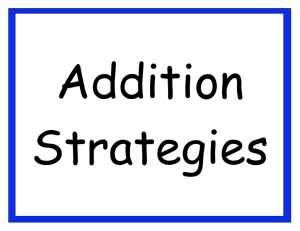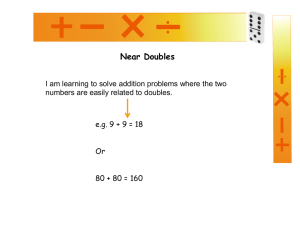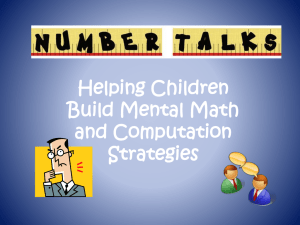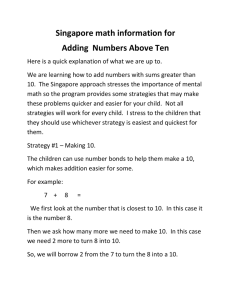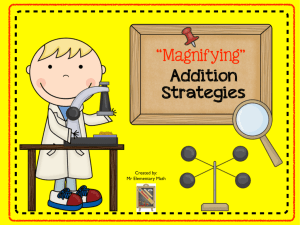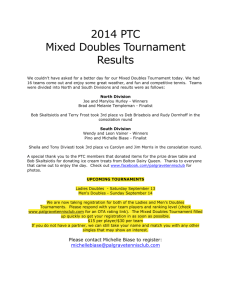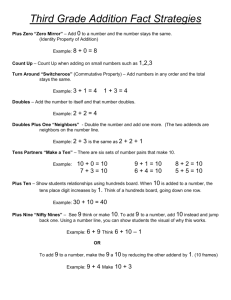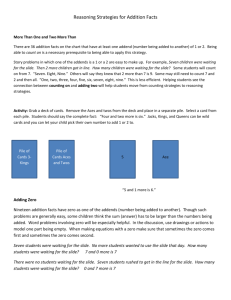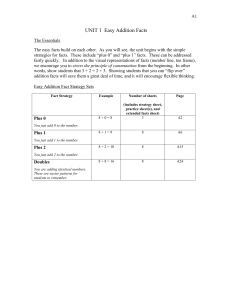Addition Top-It
advertisement
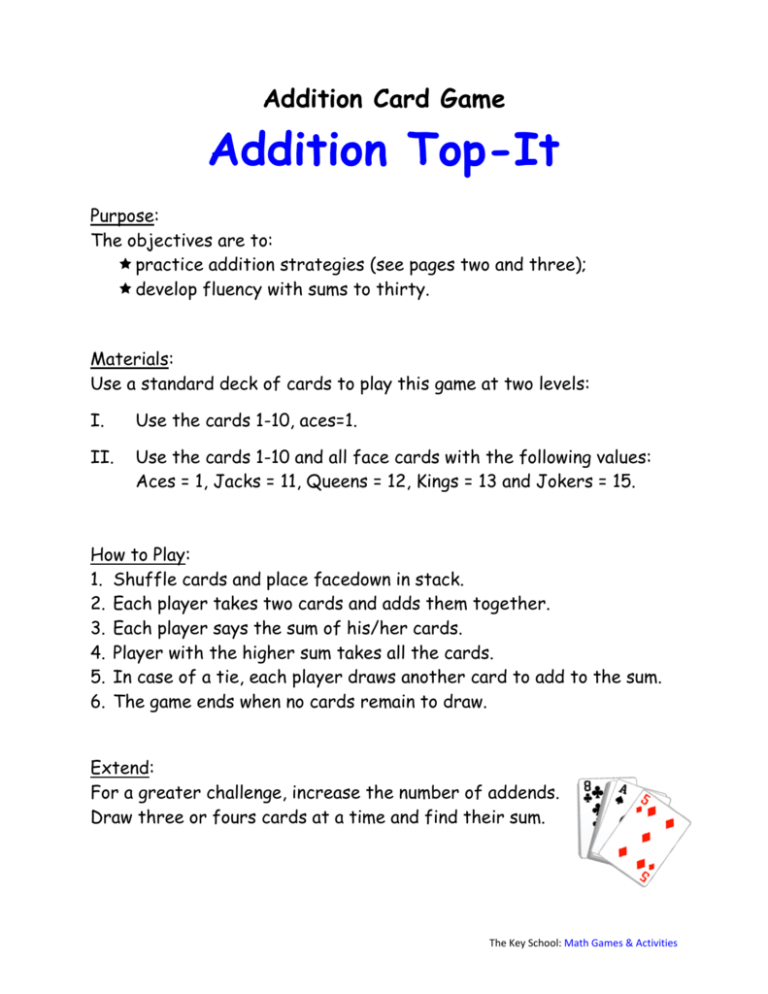
Addition Card Game Addition Top-It Purpose: The objectives are to: practice addition strategies (see pages two and three); develop fluency with sums to thirty. Materials: Use a standard deck of cards to play this game at two levels: I. Use the cards 1-10, aces=1. II. Use the cards 1-10 and all face cards with the following values: Aces = 1, Jacks = 11, Queens = 12, Kings = 13 and Jokers = 15. How to Play: 1. Shuffle cards and place facedown in stack. 2. Each player takes two cards and adds them together. 3. Each player says the sum of his/her cards. 4. Player with the higher sum takes all the cards. 5. In case of a tie, each player draws another card to add to the sum. 6. The game ends when no cards remain to draw. Extend: For a greater challenge, increase the number of addends. Draw three or fours cards at a time and find their sum. The Key School: Math Games & Activities Basic Facts Addition Strategies There are broad categories of addition strategies - Count Up, Doubles, and Tens - that promote important understandings of number relationships and help children master basic facts. Students develop fluency as they think through these approaches, express strategies in their own ways, and ultimately construct an understanding of the key number relationships and properties that foster efficient and accurate computation. Count Up: To add a small quantity on to a larger quantity. For 14 + 3, count on fourteen and say, “15, 16, 17”. N + 0: N + 1: N + 2: N + 3: Plus zero always equals the number Plus one is always one more than the number Count up two from the number Count up three from the number [N means number.] Encourage counting up when adding small numbers such as 1, 2, or 3. [Although counting up can be used to join larger numbers together, it is time consuming. What follows are approaches to computation with larger addends that promote efficiency, accuracy, and speed.] Doubles: Doubles Facts are relatively easy to learn because all the sums are even and make a counting by twos pattern. Doubles serve as “anchor facts” for related facts. 1+1=2 2+2=4 3+3=6 4+4=8 5 + 5 = 10 6 + 6 = 12 7 + 7 = 14 8 + 8 = 16 9 + 9 = 18 10 + 10 = 20 Doubles Plus One is also called Double Neighbors because one adds the number to the number that “lives next door.” In other words, double the addend and add one more. This strategy can be extended to Doubles Plus Two. Doubles Fact Doubles Plus One If you know 6 + 6 = 12 → then 6 + 7 is just 6 + 6 + 1 = 13. If you know 8 + 8 = 16 → then 8 + 9 is just 8 + 8 + 1 = 17. Tens: Ten’s Partners are number pairs that equal 10. Seeing numbers in relationship to making ten is important for efficient computation in a base-10 number system. 0 + 10 = 10 1 + 9 = 10 2 + 8 = 10 3 + 7 = 10 4 + 6 = 10 5 + 5 = 10 Plus Ten comes easily for children once they have enough experience to understand and express the following pattern: When adding 10 to a number, the digit in the tens place increases by 1 while the digit in the ones place remains the same (however, when adding 10 to a number in the 90’s the pattern changes resulting in 10 tens or 100). The Key School: Math Games & Activities Addition Strategies, continued Plus Nine is based on the fact that 9 is just one away from 10. Two common approaches are: See Nine, Think Ten: See 6 + 9, think 6 + 10 - 1. See 14 + 9, think 14 + 10 - 1. Turn Nine Into Ten: Turn 6 + 9 into 5 + 10. Turn 14 + 9 into 13 + 10. The above strategies can be applied to Plus Eight facts because eight is just 2 away from ten. Hidden Facts: For other addition facts, we encourage students to find Hidden Doubles or Hidden Tens within these problems, thereby building on what they know. See how the addends are decomposed below to form doubles and tens that make computation easier. Find the Hidden Helpers HIDDEN DOUBLES HIDDEN TENS 7+5=? 5+5+2 6+6 7+3+2 6+8=? 6+6+2 7+7 6+4+4 8+2+4 ---------------------------------- Key Terms ----------------------------- Addend: The numbers in an addition problem. Commutative Property of Addition: Numbers can be added on any order without changing the sum. 3 + 4 = 7 sum addends Digit: The symbols 0, 1, 2, 3, 4, 5, 6, 7, 8, 9, used to write any number. FAMILY OF FACTS Fact Family: A group of related addition and subtraction facts. 6=5+1 6=1+5 6–5=1 6–1=5 Identity Property of Addition: When you add zero to a number, it does not change the total. Place Value: The value of a digit as determined by its position (the ones column, tens column, and so forth). Sum: The result of joining quantities; the total amount. The Key School: Math Games & Activities
